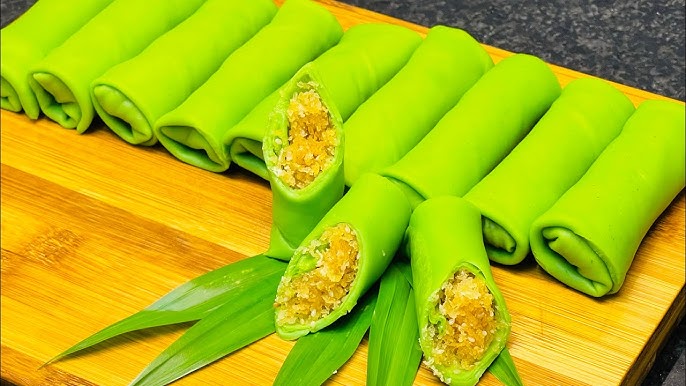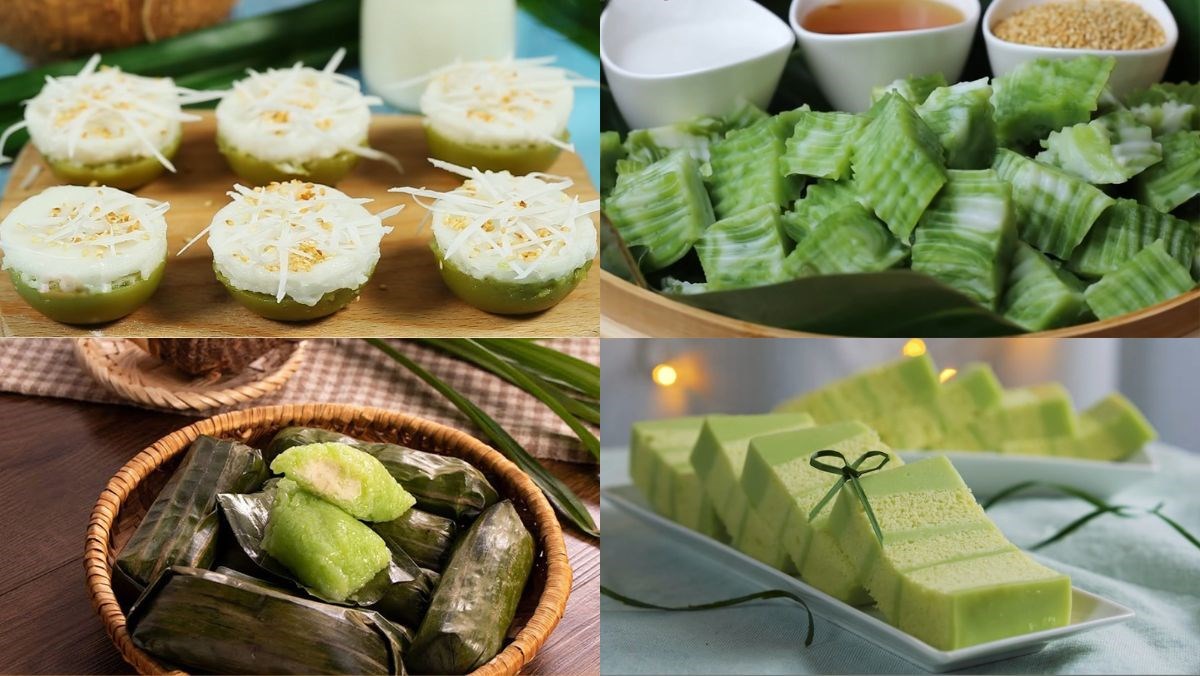Bánh Ống Lá Dứa
1. What is Bánh Ống Lá Dứa?
Bánh ống lá dứa is a sweet, steamed rice cake that originated from the Khmer ethnic group in southern Vietnam, especially in Sóc Trăng province. The name "bánh ống" refers to the tube-like shape of the cake, which is traditionally steamed inside bamboo or metal tubes.
This dessert is fragrant, soft, slightly chewy, and lightly sweet—often sold at local markets or made during festivals.
2. Characteristics of the Dish
Bánh ống lá dứa has:
-
A light green color from pandan leaves (lá dứa)
-
A sweet aroma that blends pandan, coconut, and sticky rice
-
A soft, spongy texture, often served warm
-
Sometimes topped with grated coconut or sesame seeds
It is considered a simple but meaningful snack, often associated with childhood and traditional celebrations in Khmer culture.
3. Ingredients and How It’s Made
Main ingredients:
-
Rice flour or glutinous rice flour
-
Sugar
-
Grated coconut
-
Pandan leaf juice (for flavor and natural green color)
-
Pinch of salt
Optional toppings:
-
Fresh grated coconut
-
Toasted sesame seeds or crushed peanuts
How it’s made:
-
Pandan leaves are blended with water to extract a fragrant green juice.
-
The juice is mixed with rice flour, sugar, and grated coconut to form a smooth batter.
-
The batter is poured into small metal or bamboo tubes, about 10–15 cm long.
-
The tubes are then steamed over boiling water until the cake is firm and cooked.
-
The cakes are gently removed from the tubes and served warm, topped with fresh coconut.
In modern versions, metal molds are sometimes used instead of bamboo, but the traditional method is still preferred for its authenticity and aroma.
4. How to Enjoy Bánh Ống Lá Dứa
-
Best eaten warm, right after steaming.
-
Often served with a sprinkle of grated coconut and sometimes a pinch of salt to balance the sweetness.
-
Pairs well with hot tea as a light snack.
You can find it at street markets, food stalls, and Khmer community events in Sóc Trăng.
5. Cultural Significance
Bánh ống lá dứa is a symbol of Khmer identity and tradition:
-
Commonly made during Khmer New Year (Chôl Chnăm Thmây) and other religious or family ceremonies.
-
Represents community spirit, as families often gather to make it together.
-
The simple ingredients and preparation reflect the resourcefulness and harmony with nature in Khmer rural life.
In Sóc Trăng, where Kinh, Khmer, and Hoa cultures blend, this dish helps preserve ethnic heritage and promote culinary diversity.
Conclusion
Bánh ống lá dứa is more than a sweet treat—it is a gentle reminder of tradition, family, and the rich cultural tapestry of the Khmer people in Sóc Trăng. Its light sweetness, fragrant aroma, and soft texture make it a beloved snack that warms both heart and memory.



